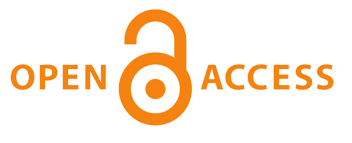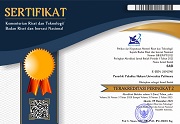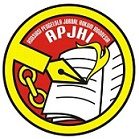Building The Strengthening of Environmental Protection and Management In The Industrial Revolution-Era 4.0
 ), Nadir Nadir(2), Fatkhurohman Fatkhurohman(3)
), Nadir Nadir(2), Fatkhurohman Fatkhurohman(3)
(1) Faculty of Law Madura University, Pamekasan, Indonesia
(2) Faculty of Law Madura University, Pamekasan, Indonesia
(3) Faculty of Law Widyagama University, Malang, Indonesia
 Corresponding Author
Corresponding Author
Abstract
Introduction: Environmental protection is no longer negotiable, in Indonesia and internationally the destruction of the environment due to mining and deforestation has reached an alarming threshold and threatens the lives of future generations. The actions that have been taken and the existence of institutions / organizations in the field of environment are not able to make a maximum contribution to environmental protection.
Purposes of the Research: The purpose of this research is to find a concept of strengthening environmental protection that is more effective and efficient and can be applied in preventing massive environmental damage both on a national and international scale and efforts to rehabilitate environmental damage that can be carried out by local communities with government support in the future, especially in the era of the industrial revolution 4.0.
Methods of the Research: This research is a qualitative research that examines legal policies (normative legal research) related to the environment. The data used is secondary data in the form of literature from the opinions of experts as well as the results of previous studies relevant to the topic of the problem. The collected data is grouped according to the stages and systematics of research and the flow of discussion then analyzed by providing explanations that are strengthened by theories from legal experts, especially in the environmental field.
Results of the Research: Strengthening environmental protection and management in the industrial era 4.0 can be done in two ways, namely: (1) strengthening the role of the community initiated and fully supported by the government by making the community a partner in environmental management (2) Institutional strengthening in environmental protection and management, namely by making customary / community institutions as one of the main elements in policies related to the environment.
Keywords
DOI
10.47268/sasi.v28i4.1145
Published
2022-12-30
How To Cite
@article{SASI1145,
author = {Adi Gunawan and Nadir Nadir and Fatkhurohman Fatkhurohman},
title = {Building The Strengthening of Environmental Protection and Management In The Industrial Revolution-Era 4.0},
journal = {SASI},
volume = {28},
number = {4},
year = {2022},
keywords = {Protection; Environment; Industrial Revolution 4.0},
abstract = {Introduction: Environmental protection is no longer negotiable, in Indonesia and internationally the destruction of the environment due to mining and deforestation has reached an alarming threshold and threatens the lives of future generations. The actions that have been taken and the existence of institutions / organizations in the field of environment are not able to make a maximum contribution to environmental protection.Purposes of the Research: The purpose of this research is to find a concept of strengthening environmental protection that is more effective and efficient and can be applied in preventing massive environmental damage both on a national and international scale and efforts to rehabilitate environmental damage that can be carried out by local communities with government support in the future, especially in the era of the industrial revolution 4.0.Methods of the Research: This research is a qualitative research that examines legal policies (normative legal research) related to the environment. The data used is secondary data in the form of literature from the opinions of experts as well as the results of previous studies relevant to the topic of the problem. The collected data is grouped according to the stages and systematics of research and the flow of discussion then analyzed by providing explanations that are strengthened by theories from legal experts, especially in the environmental field.Results of the Research: Strengthening environmental protection and management in the industrial era 4.0 can be done in two ways, namely: (1) strengthening the role of the community initiated and fully supported by the government by making the community a partner in environmental management (2) Institutional strengthening in environmental protection and management, namely by making customary / community institutions as one of the main elements in policies related to the environment.},
issn = {2614-2961}, pages = {619--633} doi = {10.47268/sasi.v28i4.1145},
url = {https://fhukum.unpatti.ac.id/jurnal/sasi/article/view/1145}
}
Journal Article
Astuti, Rini. “Keadilan Inter-Generasi, Malapetaka Lingkungan, Dan Pemuda Di Era Antroposen.” Jurnal Studi Pemuda 8, no. 2 (2019): 166. https://doi.org/10.22146/studipemudaugm.48576.
Chadijah, Siti. “Tinjauan Abjection Dalam Penciptaan Ulang Produk: Sebuah Perspektif Menuju Periode Antroposen.” Jurnal Dimensi Seni Rupa Dan Desain 18, no. 2 (2022): 217–30. https://doi.org/10.25105/dim.v18i2.13001.
Iswanto, Dodik Ridho Nurrochmat, and Ulfah Juniarti Siregar. “Life Cycle Assessment (LCA) of Wood Pellet Production at Korintiga Hutani Company, Central Kalimantan, Indonesia.” Jurnal Manajemen Hutan Tropika 27, no. 3 (2021): 200–207. https://doi.org/10.7226/jtfm.27.3.200.
Kewengian, Pinkan, Grace. “Partisipasi Masyarakat Dalam Pengelolaan Dan Pelestarian Lingkungan Hidup.” Lex Et Societatis 7, no. 5 (2019): 55–62.
Laturette, Adonia Ivonne. “Penyelesaian Sengketa Hak Ulayat Pada Kawasan Hutan.” Sasi 27, no. 1 (2021): 102. https://doi.org/10.47268/sasi.v27i1.504.
Lee, Kuan Ken, Nicholas Spath, Mark R. Miller, Nicholas L. Mills, and Anoop S.V. Shah. “Short-Term Exposure to Carbon Monoxide and Myocardial Infarction: A Systematic Review and Meta-Analysis.” Environment International 143, no. July (2020): 105901. https://doi.org/10.1016/j.envint.2020.105901.
Lubis, Hamzah. “Relasi Pemberdayaan Dan Partisipasi Masyarakat Dengan Kerusakan Lingkungan.” Jurnal Kesehatan Masyarakat Dan Lingkungan Hidup I, no. I (2016): 16. https://doi.org/http://e-journal.sari-mutiara.ac.id/index.php/Kesehatan_Masyarakat/article/view/145.
Pambudhi, Hario Danang, and Ega Ramadayanti. “Menilai Kembali Politik Hukum Perlindungan Lingkungan Dalam UU Cipta Kerja Untuk Mendukung Keberlanjutan Ekologis.” Jurnal Hukum Lingkungan Indonesia 7, no. 2 (2021): 297–322. https://doi.org/10.38011/jhli.v7i2.313.
Pereira, A. C., and F. Romero. “A Review of the Meanings and the Implications of the Industry 4.0 Concept.” Procedia Manufacturing 13, no. January 2019 (2017): 1206–14. https://doi.org/10.1016/j.promfg.2017.09.032.
Poerwantika, T. R. Hatami, M. R. “Deforestasi Amazon Pada Era Bolsonaro.” Journal of International Relation 5, no. 2 (2021): 190. https://doi.org/https://doi.org/10.32787/ijir.v5i2.205.
Rezkita, Shanta, and Kristi Wardani. “Pengintegrasian Pendidikan Lingkungan Hidup Membentuk Karakter Peduli Lingkungan Di Sekolah Dasar.” Trihayu: Jurnal Pendidikan Ke-SD-An 4, no. 2 (2018): 327–31.
Rica Naudita Krisna Setioningrum, and Jojok Mukono. “Mplementasi Program Adiwiyata Mandiri Dalam Peningkatan Partisipasi Pembelajaran Lingkungan Hidup Di Smp Negeri 12 Surabaya.” Jurnal Ilmiah Pendidikan Lingkungan Dan Pembangunan 21, no. 01 (2020): 30–42. https://doi.org/10.21009/plpb.211.04.
Samad, Rezki Purnama, A. M. Yunus Wahid, and Hamzah Halim. “Urgensi Partisipasi Masyarakat Terhadap Izin Usaha Pertambangan Pasir.” Al-Ishlah: Jurnal Ilmiah Hukum 24, no. 1 (2021): 143–62. https://doi.org/10.56087/aijih.v24i1.87.
Stock, T., and G. Seliger. “Opportunities of Sustainable Manufacturing in Industry 4.0.” Procedia CIRP 40, no. Icc (2016): 536–41. https://doi.org/10.1016/j.procir.2016.01.129.
Suparmoko. “Peranan Sumber Daya Alam Dan Lingkungan Dalam Pembangunan, 2014.” In Modul I, 3. Universitas Terbuka, 2014. repository.ut.ac.id.
Susila Wibawa, Kadek Cahya. “Mengembangkan Partisipasi Masyarakat Dalam Perlindungan Dan Pengelolaan Lingkungan Hidup Untuk Pembangunan Berkelanjutan.” Administrative Law and Governance Journal 2, no. 1 (2019): 79–92. https://doi.org/10.14710/alj.v2i1.79-92.
Suwarlan, Erlan. “Peran Lembaga Adat Kampung Kuta Dalam Pelestarian Lingkungan Hidup Berbasis Kearifan Lokal Di Kabupaten Ciamis.” Jurnal Agregasi : Aksi Reformasi Government Dalam Demokrasi 8, no. 2 (2020): 114–28. https://doi.org/10.34010/agregasi.v8i2.3289.
Wahyudi, Et.al. “TINGKAT KERUSAKAN TEGAKAN TINGGAL PADA AREAL BEKAS TEBANGAN DI IUPHHK-HA ( Residual Trees Damage Rate at Logged Over Forest in Forest Concession Of.” Hutan Tropika XV, no. 2 (2020): 71. https://doi.org/10.36873/jht.v15i2.2162.
Book
Dillah, Suratman and Philips. Metodologi Penelitian Hukum. Bandung: Alpabeta, 2015.
Oktaberina. Upaya Perlindungan Lingkungan Hidup Dalam Era Perdagangan Bebas: Dalam Ida Susanti Dan Batu Seto Ed, Ida Susanti Dan Batu Seto Ed, Aspek Hukum Dari Perdagangan Bebas. Bandung: Citra Aditya Bakti, 2013.
Seto, Ida Susanti & Bayu. Aspek Hukum Perdagangan Bebas: Menelaah Kesiapan Hukum Indonesia Dalam Penyelenggaraan Perdagangan Bebas. Bandung: Citra Aditya Bakti, 2013.
Sood, Muhammad. Indonesian Environmental Law. Jakarta: Sinar Grafika, 2019.
Thesis, Web Page, and Others
Wirawan, Unggul. “Januari, Deforestasi Di Amazon Brasil Mencapai Rekor Baru.” News One. Jakarta, 2022. https://www.beritasatu.com/news/890169.
Indonesia, CNBC. “Astaga Bolsonaro! Amazon Makin Gundul, Pembabatan Hutan Rekor.” February 2022. https://www.cnbcindonesia.com/news/ 20220214201729-4-315359/.
Indonesia, CNN. “No Title.” November 2021. https://www.cnnindonesia.com/nasional/20211110173824-20-719349
| Dublin Core | PKP Metadata Items | Metadata for this Document | |
| 1. | Title | Title of document | Building The Strengthening of Environmental Protection and Management In The Industrial Revolution-Era 4.0 |
| 2. | Creator | Author's name, affiliation, country | Adi Gunawan; Faculty of Law Madura University, Pamekasan; Indonesia |
| 2. | Creator | Author's name, affiliation, country | Nadir Nadir; Faculty of Law Madura University, Pamekasan; Indonesia |
| 2. | Creator | Author's name, affiliation, country | Fatkhurohman Fatkhurohman; Faculty of Law Widyagama University, Malang; Indonesia |
| 3. | Subject | Discipline(s) | |
| 3. | Subject | Keyword(s) | Protection; Environment; Industrial Revolution 4.0 |
| 4. | Description | Abstract | Introduction: Environmental protection is no longer negotiable, in Indonesia and internationally the destruction of the environment due to mining and deforestation has reached an alarming threshold and threatens the lives of future generations. The actions that have been taken and the existence of institutions / organizations in the field of environment are not able to make a maximum contribution to environmental protection.Purposes of the Research: The purpose of this research is to find a concept of strengthening environmental protection that is more effective and efficient and can be applied in preventing massive environmental damage both on a national and international scale and efforts to rehabilitate environmental damage that can be carried out by local communities with government support in the future, especially in the era of the industrial revolution 4.0.Methods of the Research: This research is a qualitative research that examines legal policies (normative legal research) related to the environment. The data used is secondary data in the form of literature from the opinions of experts as well as the results of previous studies relevant to the topic of the problem. The collected data is grouped according to the stages and systematics of research and the flow of discussion then analyzed by providing explanations that are strengthened by theories from legal experts, especially in the environmental field.Results of the Research: Strengthening environmental protection and management in the industrial era 4.0 can be done in two ways, namely: (1) strengthening the role of the community initiated and fully supported by the government by making the community a partner in environmental management (2) Institutional strengthening in environmental protection and management, namely by making customary / community institutions as one of the main elements in policies related to the environment. |
| 5. | Publisher | Organizing agency, location | Faculty of Law, Universitas Pattimura |
| 6. | Contributor | Sponsor(s) | Faculty of Law Madura University, Pamekasan; Faculty of Law Widyagama University, Malang |
| 7. | Date | (YYYY-MM-DD) | 2022-12-30 |
| 8. | Type | Status & genre | Peer-reviewed Article |
| 8. | Type | Type | |
| 9. | Format | File format | |
| 10. | Identifier | Uniform Resource Identifier | https://fhukum.unpatti.ac.id/jurnal/sasi/article/view/1145 |
| 10. | Identifier | Digital Object Identifier | 10.47268/sasi.v28i4.1145 |
| 11. | Source | Title; vol., no. (year) | SASI; Volume 28 Issue 4, December 2022 |
| 12. | Language | English=en | en |
| 13. | Relation | Supp. Files | |
| 14. | Coverage | Geo-spatial location, chronological period, research sample (gender, age, etc.) | |
| 15. | Rights | Copyright and permissions | Copyright: Authors who publish their manuscripts in this Journal agree to the following conditions: 1. The copyright in each article belongs to the author, as well as the right to patent. 2. Authors can enter into separate, additional contractual arrangements for the non-exclusive distribution of the journal's published version of the work (e.g., post it to an institutional repository or publish it in a book), with an acknowledgment of its initial publication in this journal. 3. Authors are permitted and encouraged to post their work online (e.g., in institutional repositories or on their website) before and during the submission process, as it can lead to productive exchanges, as well as earlier and greater citation of published work. 4. Authors have the right to self-archiving of the article (Author Self-Archiving Policy)
License: The SASI Journal is disseminated based on the Creative Commons Attribution-NonCommercial 4.0 International license terms. This license allows anyone to copy and redistribute this material in any form or format, compose, modify, and make derivatives of this material for any purpose. You cannot use this material for commercial purposes. You must specify an appropriate name, include a link to the license, and certify that any changes have been made. You can do this in a way that is appropriate but does not imply that the licensor supports you or your use.
|
Copyright (c) 2022 Adi Gunawan, Nadir Nadir, Fatkhurohman Fatkhurohman

This work is licensed under a Creative Commons Attribution-NonCommercial 4.0 International License.

 : 2023 times
: 2023 times Download : 1313 times
Download : 1313 times
















